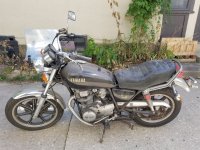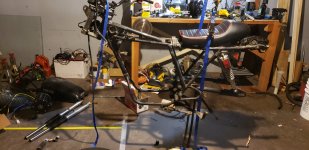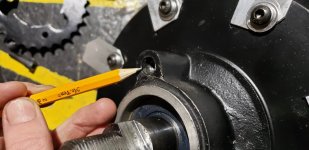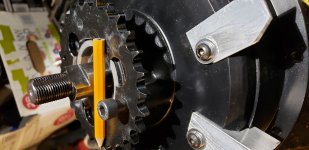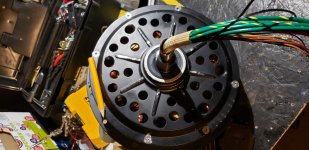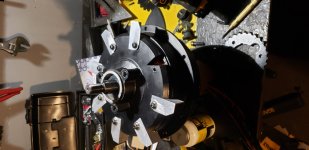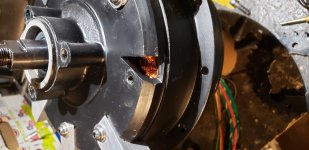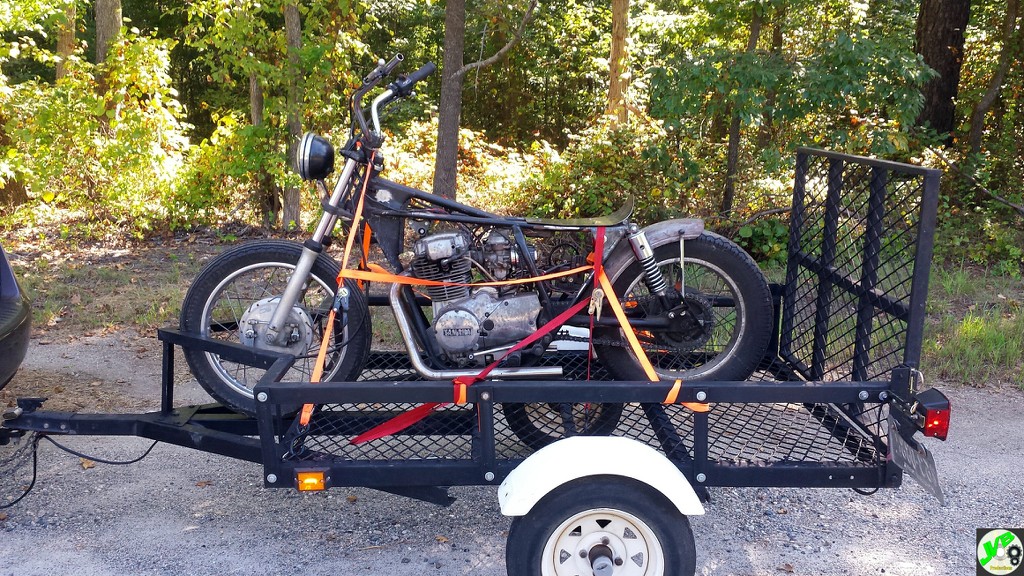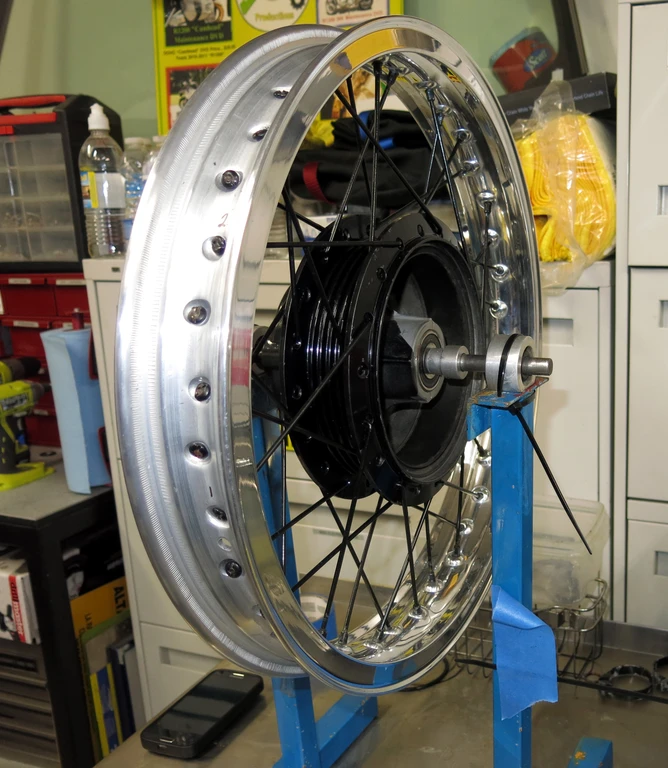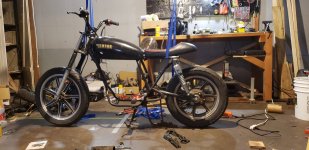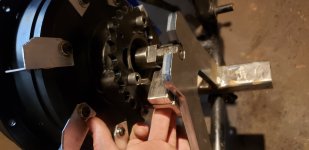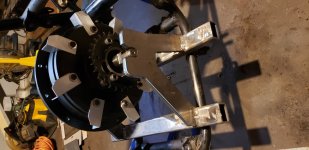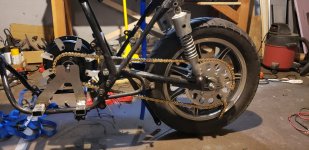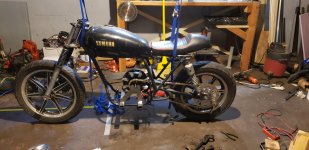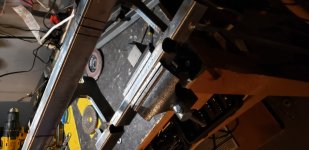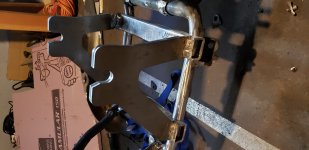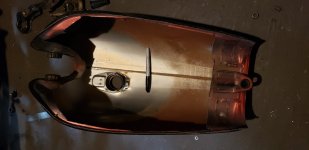FWIW, this is the same way most motor cooling fans operate (check out the alternator in most cars), as well as the way a vacuum motor system works.
It's a passive system that works well, and works better the faster the motor spins, so a motor running as a higher-RPM middrive will create more airflow (all other conditions the same) than the same one operating as a lower-RPM in-hub drive.
The
It also works better (in general) the larger the intake and outlet holes are (sometimes depending on their shape, especially at high air velocities), and the more fan blades there are (also more dependent on shape the higher the air velocity). In my limited experimentation, and observation of existing systems, larger inlet holes are more important than larger outlet holes at lower RPM, and larger outlet holes can be more important in higher RPM systems.
Part of that depends on the specifics of where the air needs to be directed inside as it comes into the inlet; in the case of an outrunner like these, it doesn't seem to matter as long as the stator support inside is "solid", and the intake holes are on the opposite cover from the outlet holes, so taht all airflow has to go past the coils and magnets on the way out on the other side. (this specific method and air path only directly cools the copper on the intake side of the stator, but copper has high thermal conductivity so the outlet side of the coils that are hotter will easily pass their heat over to the cooler intake side).
If the stator supports are "open" then air will flow more easily thru those than thru the outer airgap between magnets and stator (air generally flows more easily in a wider "hole"), and tend to bypass cooling the magnets or intake side copper, but will cool the outlet side copper on it's way out.
In this specific design, if the stator supports themselves are "aerodynamicized"

such that they create "lift" within the airflow path (vacuum on the outlet side relative to intake side) (they are rotating relative to the incoming air, even though they are not rotating relative to you, so this *may* be able to occur), it might increase the airflow slightly. I've never tested this.
(it would require clear sidecovers at the least plus a "smoke generator" to actually see how much air flows thru either path in the case of two paths being available).


